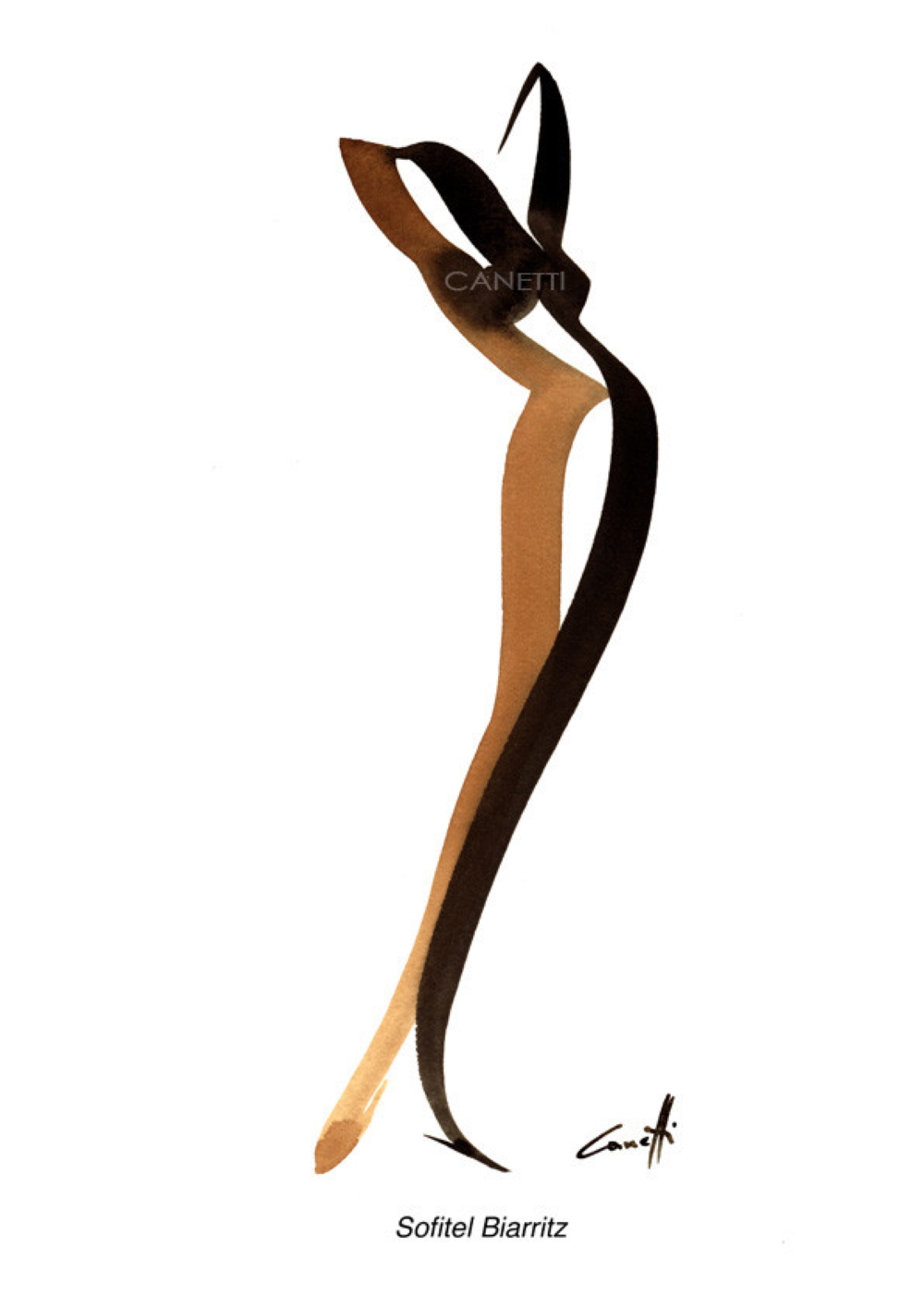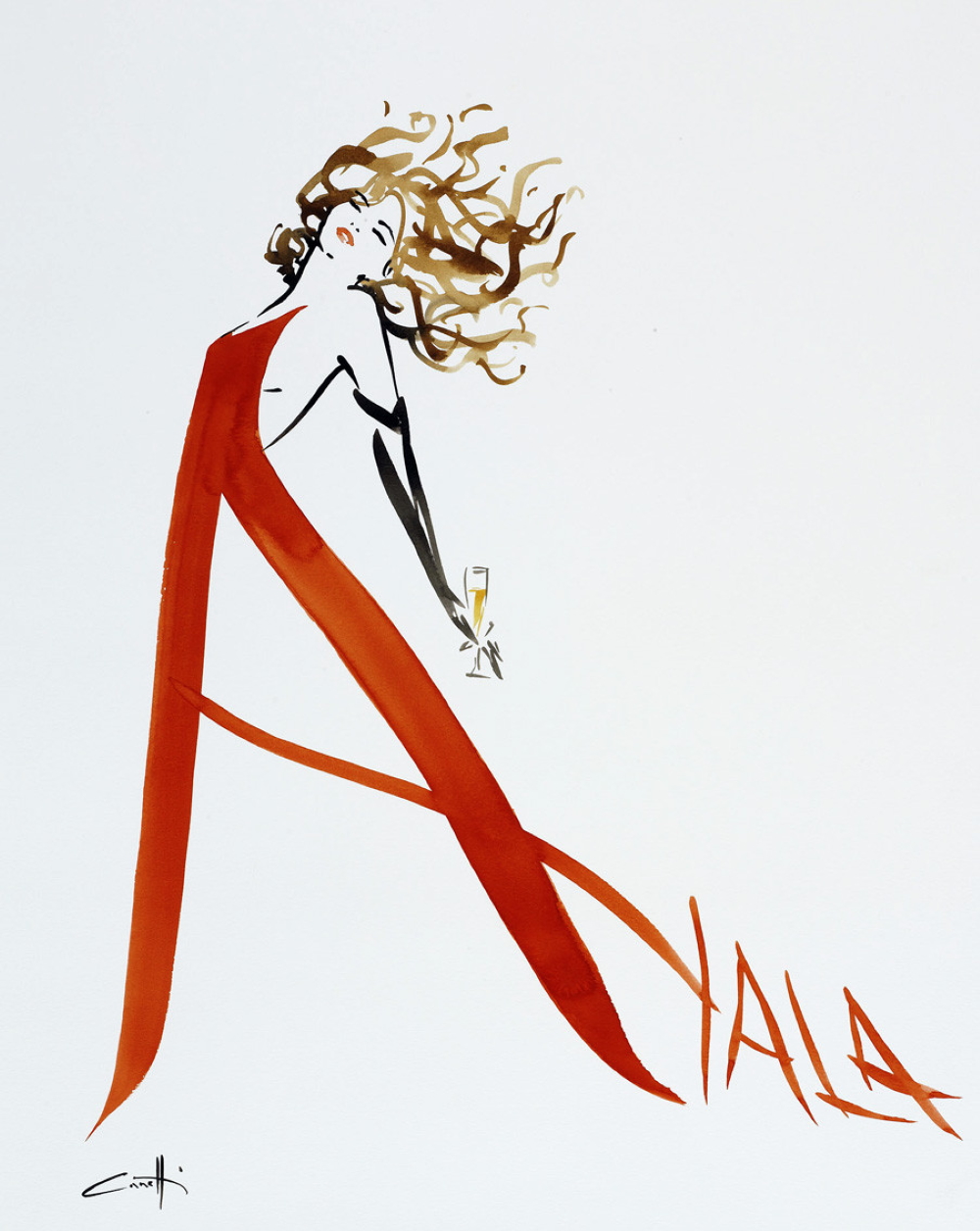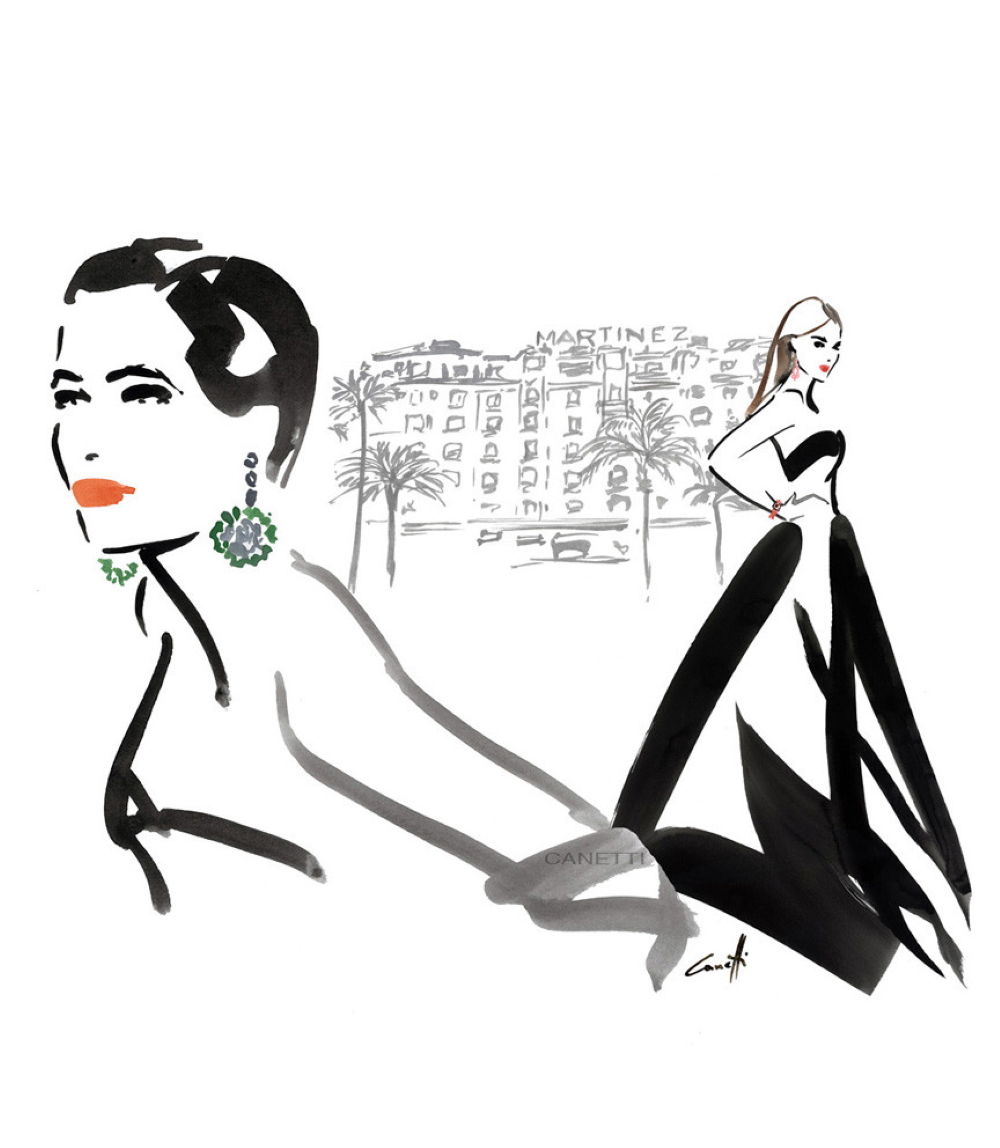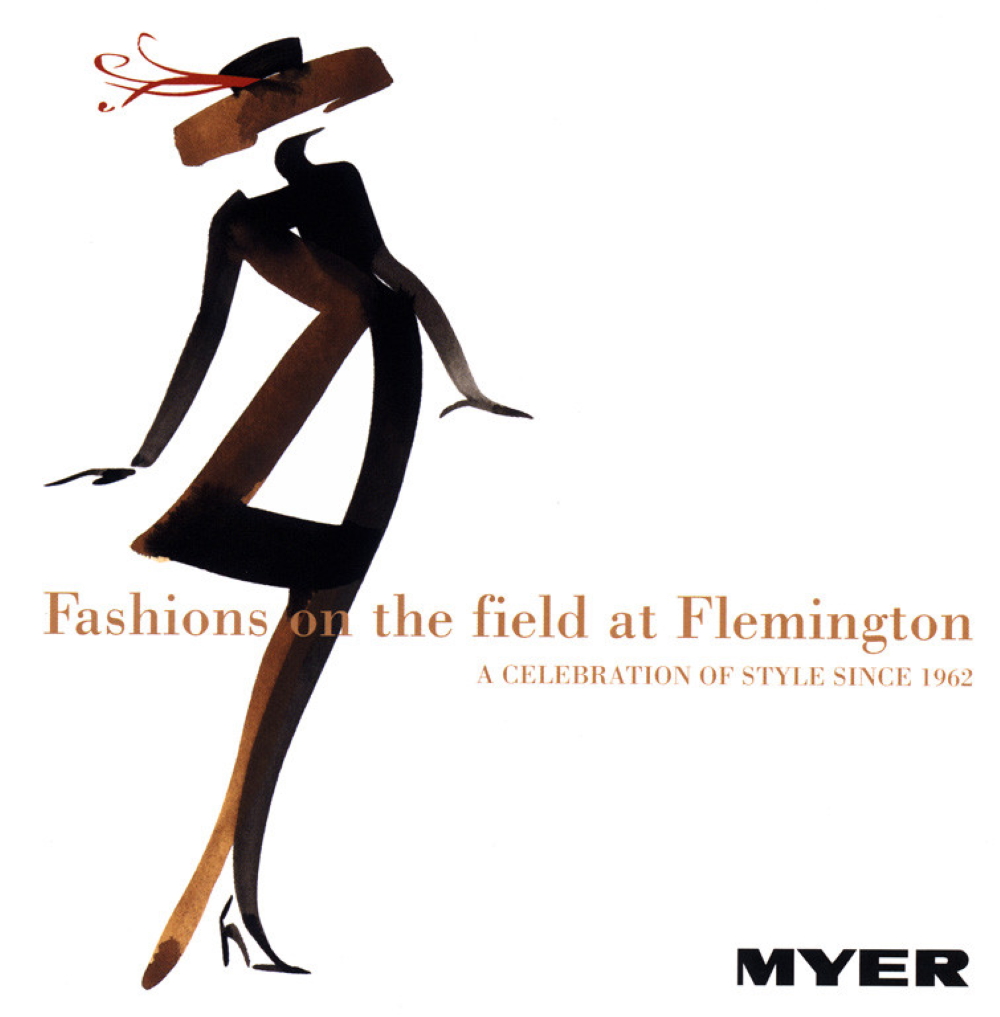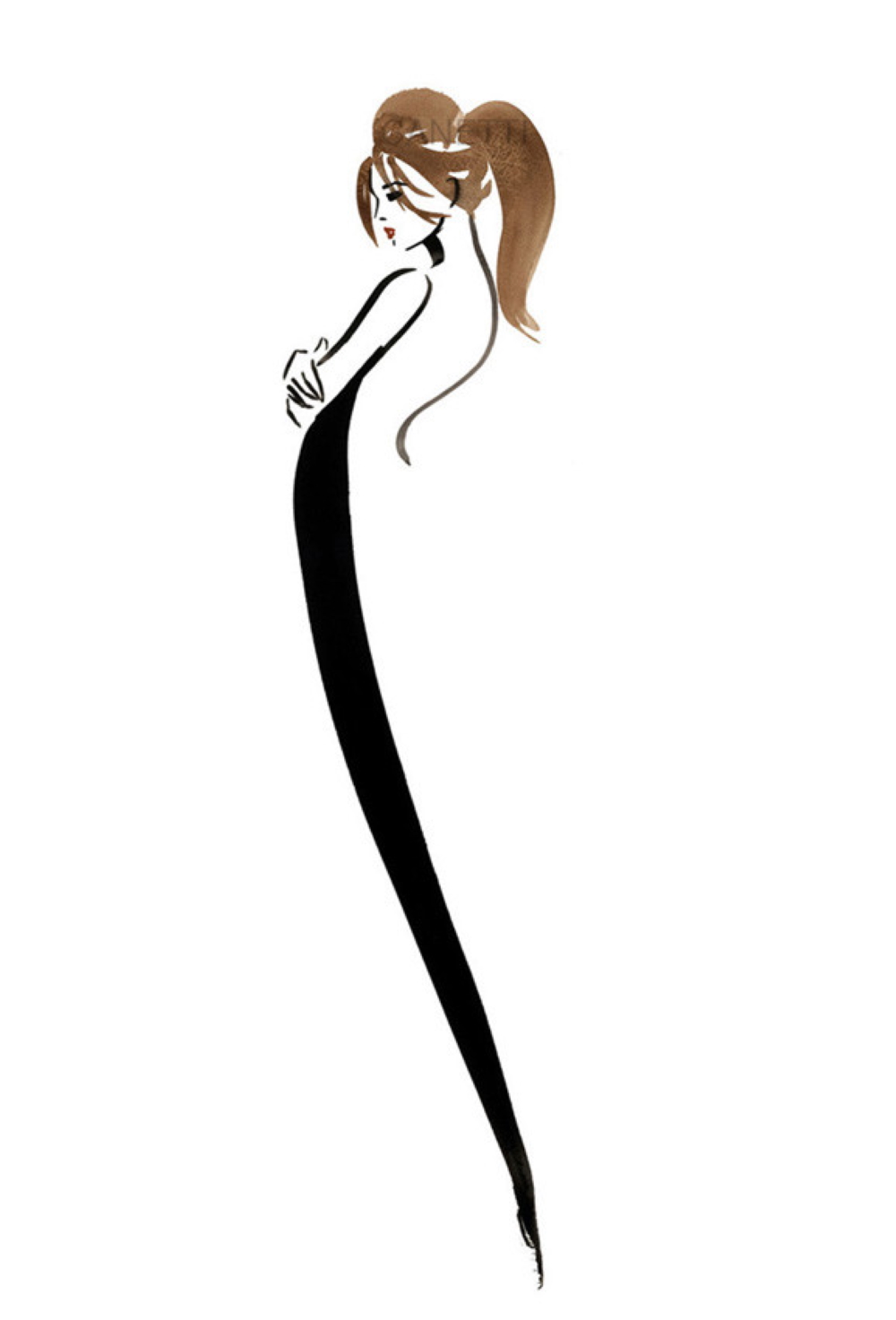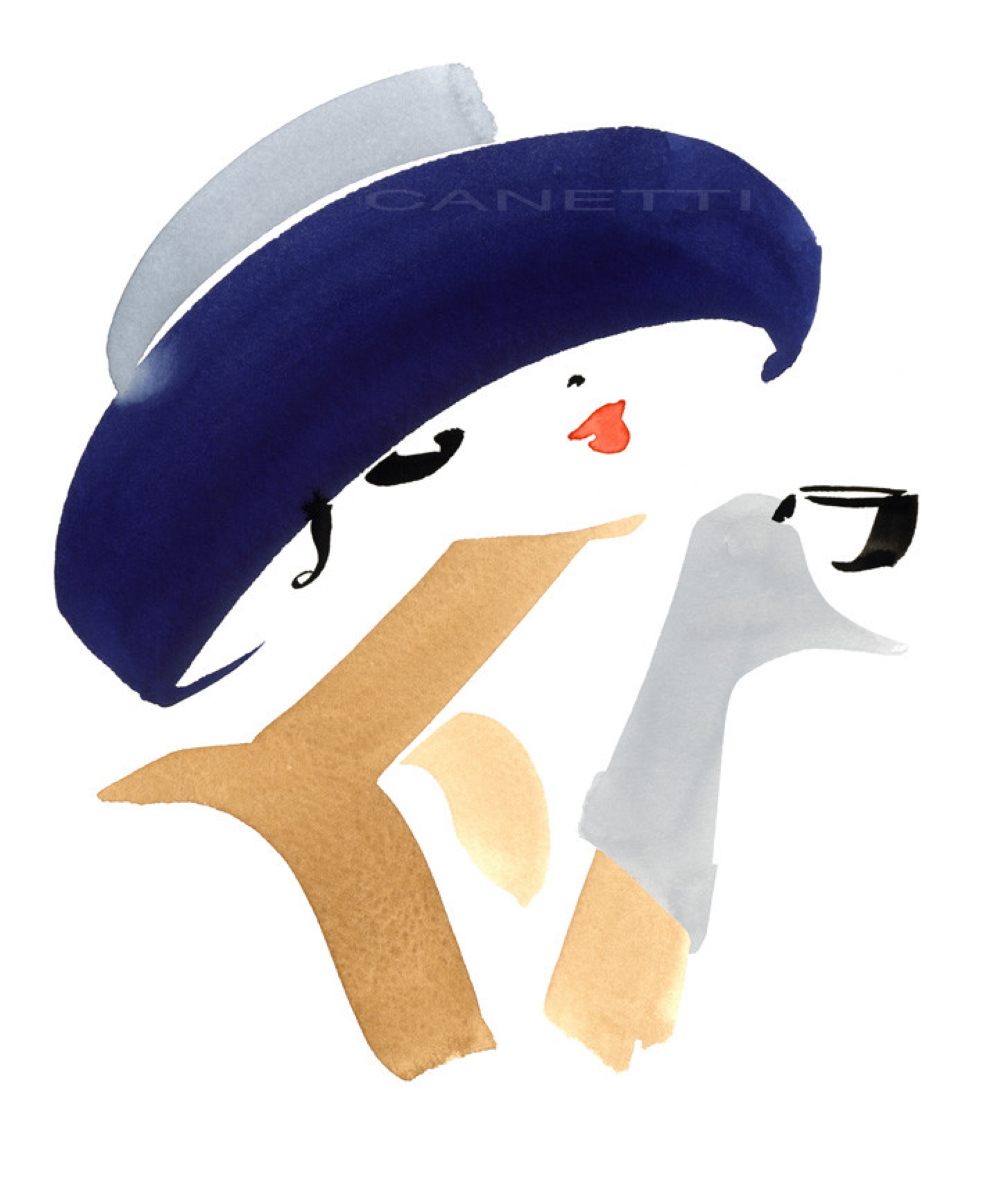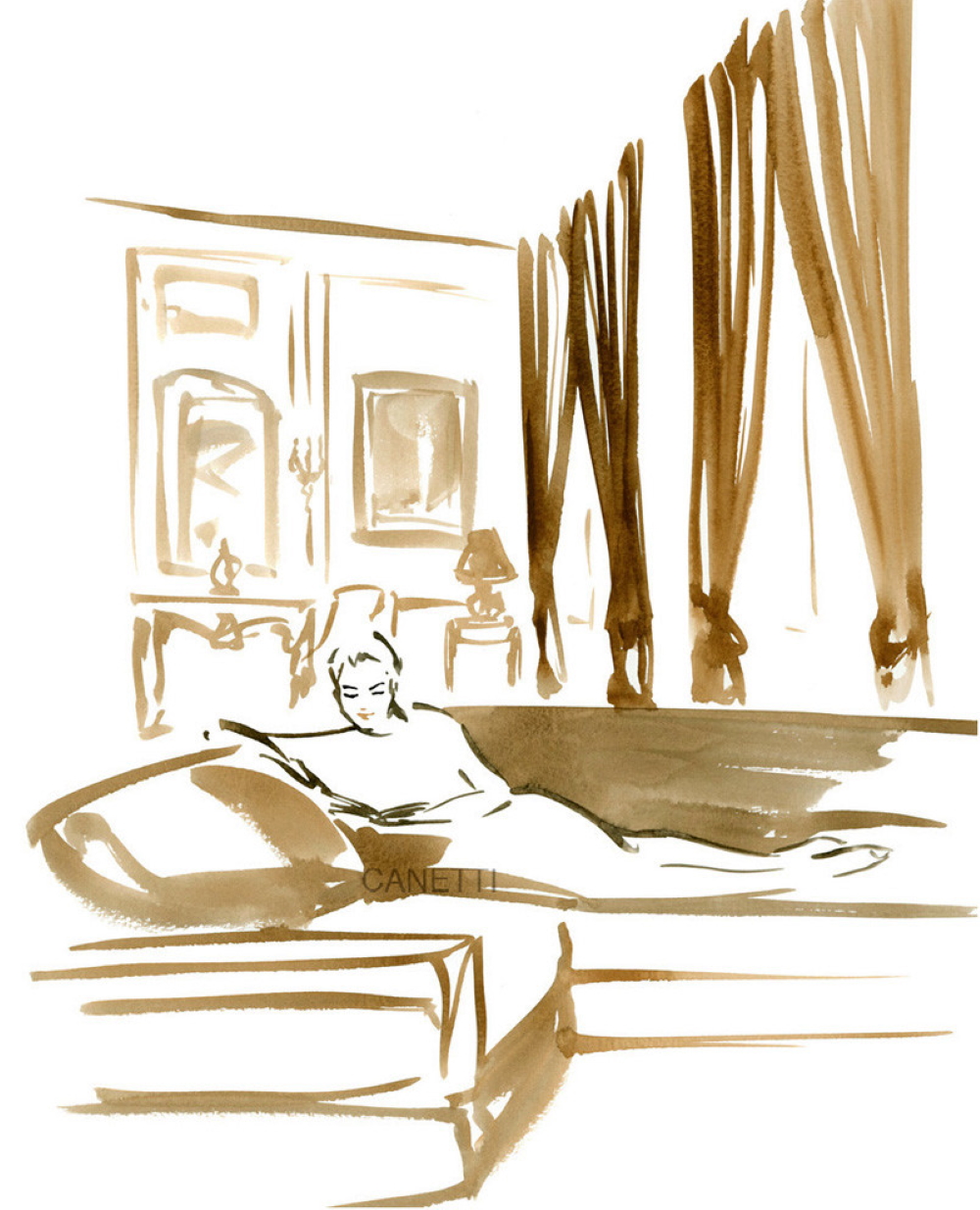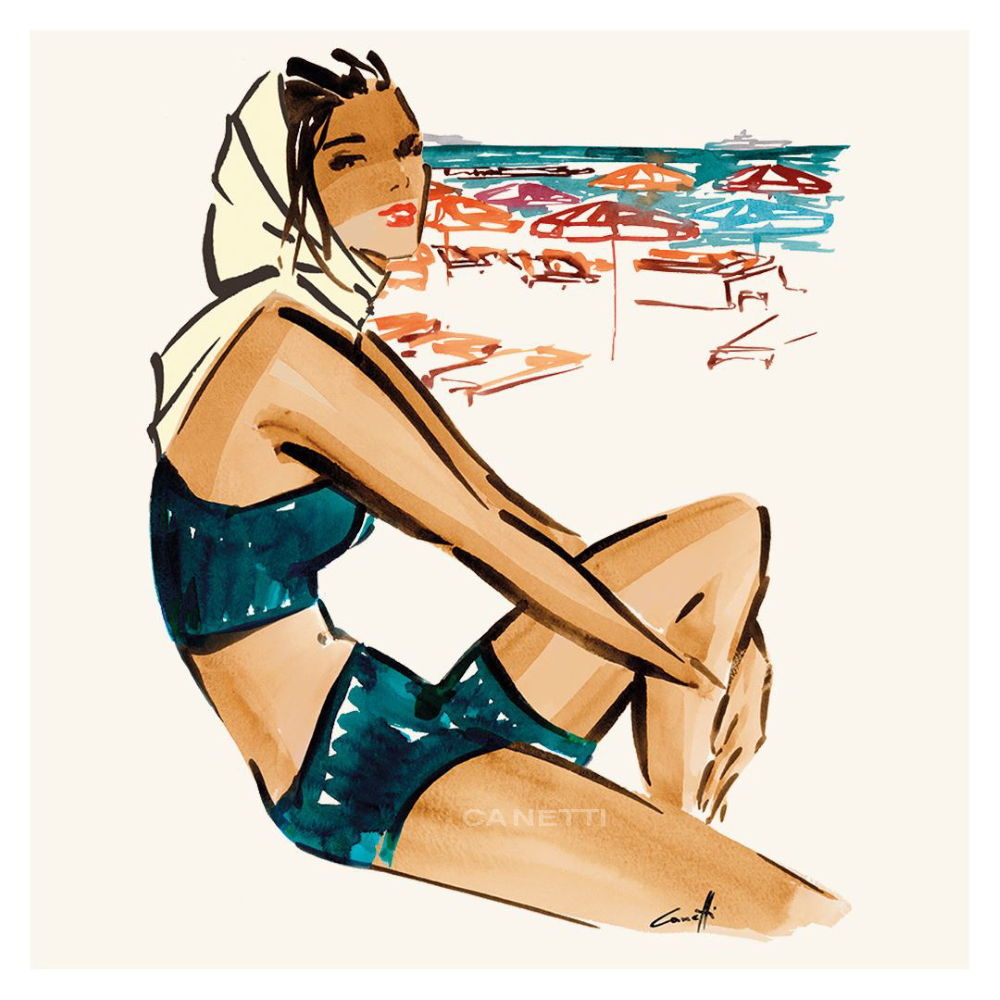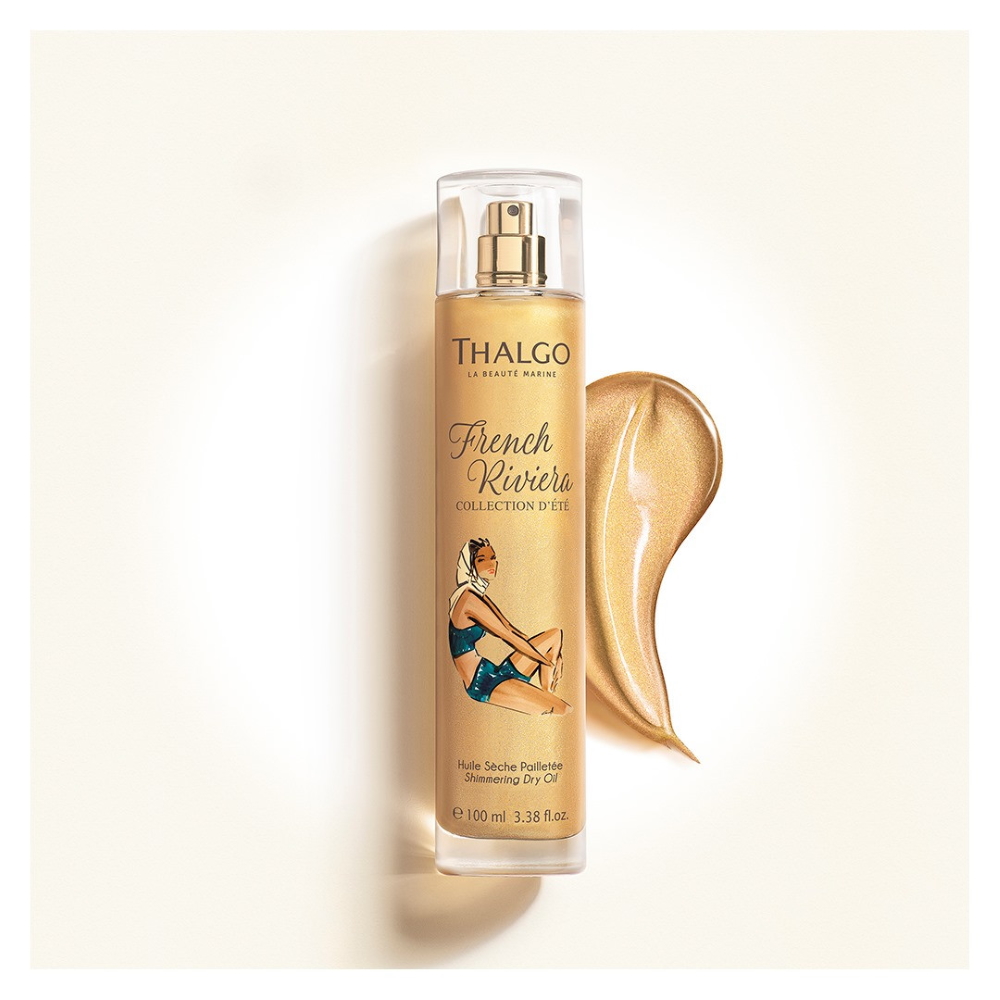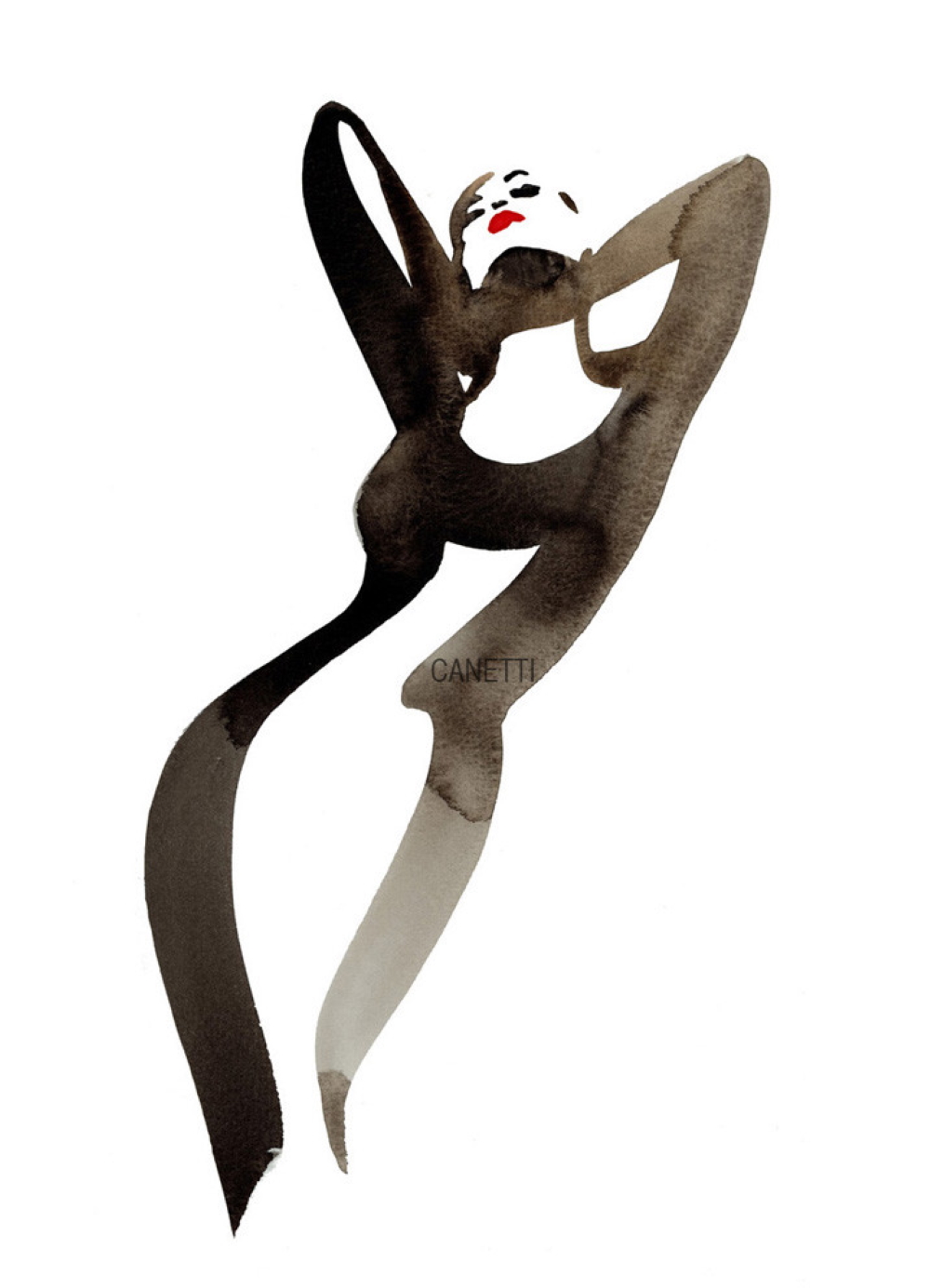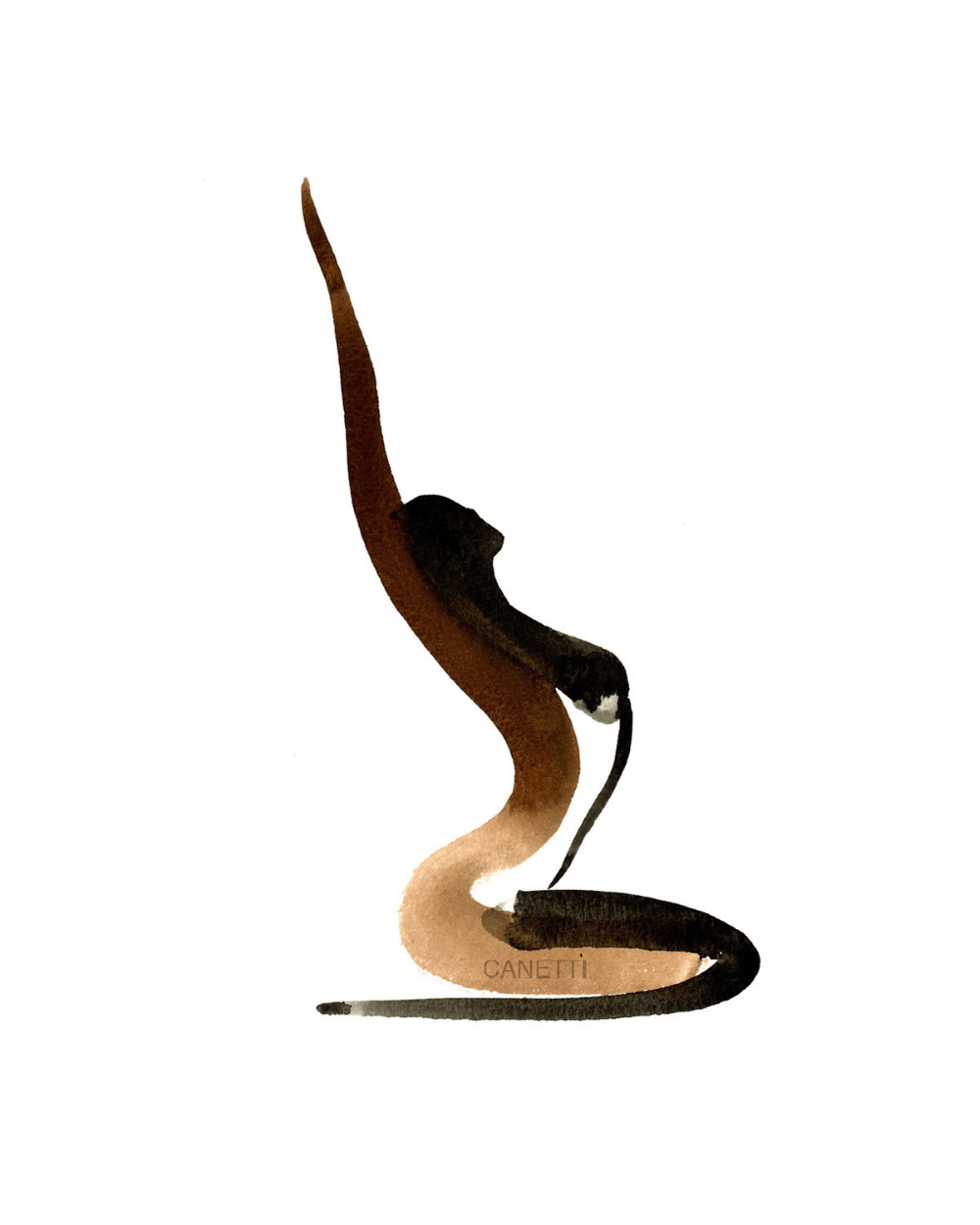Michel Canetti
artist / advertising illustrator
France / Australia
Air France, Armani, Cartier, Chanel, Estee Lauder, Givenchy, Guerlain, L'Oreal, Perrier, Renault, Louis Vuitton and many more. This artist’s client list is impressive and chances are high that you have seen one or the other of his works somewhere already. The Frenchman, with his unmistakable brushstroke, is one of the world's most sought-after fashion and lifestyle illustrators. Michel Canetti has appeared four times in the annual review “200 Best Illustrators Worldwide” by Luerzer’s Archive. His remarkable, eye-catching style stands for a reduced formal language full of sensuality.
Michel Canetti
artist / advertising illustrator
France / Australia

The smooth, flowing lines, contrasting color accents, stylish silhouettes that celebrate line and movement reveling in the form plus rigorous reduction to the essential – always drawn with a light hand: These are the characteristics for Michel Canetti’s illustrations. For art connoisseurs they might be slightly reminiscent of the paintings by influential 1940/50’s Italian haute couture fashion illustrator René Gruau (Dior) and transfer his timeless, enduring style of the past into the present. Similar to the traditional art of calligraphy, Canetti’s work requires a delicate balance between creativity and control: rounded curves and sharp, sophisticated detail. Painting in watercolor and gouache allows him to execute the spontaneous disciplined lines to show the movement of the body and fabrics.
The native Parisien (* 1955) graduated from ‘La Sorbonne’ (University of Paris) with a Bachelor of Arts in graphic design and a Masters Degree in painting restoration. Monsieur Canetti, who works for international fashion, beauty and lifestyle brands, has produced editorial illustrations for ‘Elle’ and ‘Vogue’ in France, as well as other top magazines in Europe. His art has been exhibited in private galleries around the world. Many posters of his creations were published and distributed globally.
Michel Canetti works and lives in Melbourne/Australia since 1997.
Interview July 2022
Elegant, classic, modern: timeless Parisian chic – hand painted in Melbourne
INTUITION/IMAGINATION
How does intuition present itself to you – in form of a suspicious impression, a spontaneous visualisation or whatever - maybe in dreams?
Usually, it comes from something I see, someone in the street, a photo in a magazine, something on TV.
Will any ideas be written down immediately and archived?
If I want to remember, I have to do a small sketch on a piece of paper.
Sometimes, I do an illustration or a painting from this sketch, and sometimes it stay on my desk forever…or finish in the bin…
Are great ideas based on intuition and do they reveal themselves in a kind of clear as well complete version that just has to be realized? Or is it endless trials and errors (after the first spark) that result in constant developments up until the final result?
When the idea comes from intuition, it is in general the real complete version, if it comes from a photo, a film, someone in the street, then it needs more work to achieve the final piece.
What if there is a deadline, but no intuition? Does the first fuel the latter maybe?
I do not like short deadlines. It is just stress and in general it spoils everything. It brings panic and it is not good. I prefer to have time, even if the illustration is done very quickly, at least it is not stressful. With time we can do many trials, and keep the best one, sometimes the first one…
INSPIRATION
What inspires you and how do you stimulate this special form of imaginativeness?
Women. Women nudes or with clothes, I am always in admiration of female beauty.
How do you separate the good from the bad and which ideas are worthwhile to be explored further or whether one idea has the potential of being outstanding really?
The line, if there is a good line and movement, it will be good, if there is only a static and square position, it will not be good.
Has it to appeal to you primarily or is its commercial potential an essential factor?
I have to like it to be good. If it is a big commercial work, that’s good, but if the subject is not interesting, the result will be bad….
Do you revisit old ideas or check what colleagues/competitors are up to at times?
When an idea is good, we can come back to it and make another version a bit different. In fact I come back often to the same positions. I do not look at other people works. When I see some it is just by chance…
CREATIVITY
Which time/place/environment suits your creative work process the best (tranquillity or pressure) and which path do you take from theory/idea to creation?
I prefer tranquillity, with classical music. I don’t like to be under pressure.
What is better in the realization process: speed and force creativity i.e. grasp the magic of the moment, or a slow, ripening process for implementation/elaboration?
I prefer tranquillity, but my work is fast. It has to be quick for the gesture and the brush stoke; if it is not good, I do it again…
If problems occur during creativity or one’s stuck even, how can these be solved?
Start again…
How important are self-doubt and criticism (by others) during such a process i.e. is it better to be creative on your own, only trust your own instincts, or in a team?
I do not care what the others think. I know when I do something good or something bad.
If the others like it too it is better, but if they like it and I don’t, I know it’s not good anyway…
I do not like to work in team.
Should a creative always remain true to him-/herself including taking risks & going against the flow or must one, for reasons of (commercial) survival, make concessions to the demands of the market, the wishes of clients and the audience’s expectations?
The ideal would be to remain true and do only what you think is good but if you work with commercial, you know you have to do concessions, and often the client’s idea do not serve the creation. They think “idea”, they do not think “beauty”.
How is innovation still possible if one has established a distinctive style and, just in case, is it good to be ahead of one’s time even one hazards not being understood?
When you have created a personal style, it is difficult to be confined to this style without to want to evolve. People want this style, but after a while they are tired of it….
When does the time come to end the creative process, to be content and set the final result free - or is it work-in-progress with an endless possibility of improvement?
When the work is really good, it is good immediately. When you have to re-work on it many times, it means the final result will never be fantastic….
In case of failure or - worse - a creativity crisis how do you get out of such a hole?
Sometimes there are periods of flat creativity, you just have to wish it doesn’t stay too long…
SUCCESS
Should/can one resist the temptation to recycle a ‘formula’ one’s successful with?
If it is to recycle your own formula, it is the problem to keep your style without to be locked up with it, and re-do always the same thing. If it is to recycle the formula of someone else, it doesn’t really work in the meaning you will never be as good as the original. Unfortunately, a lot of presumed “professionals” do not see the difference…
Is it desirable to create the ultimate/timeless work, but doesn’t “top of the ladder” bring up the question of “what’s next?” i.e. isn’t such a personal peak “the end”?
There is never a top, even in the same style, we can always do better.
MY FAVORITE WORK:
I really like a series of illustrations I did for Sofitel Hotel Group, 20 years ago. The silhouettes are strong, simple and minimal.
